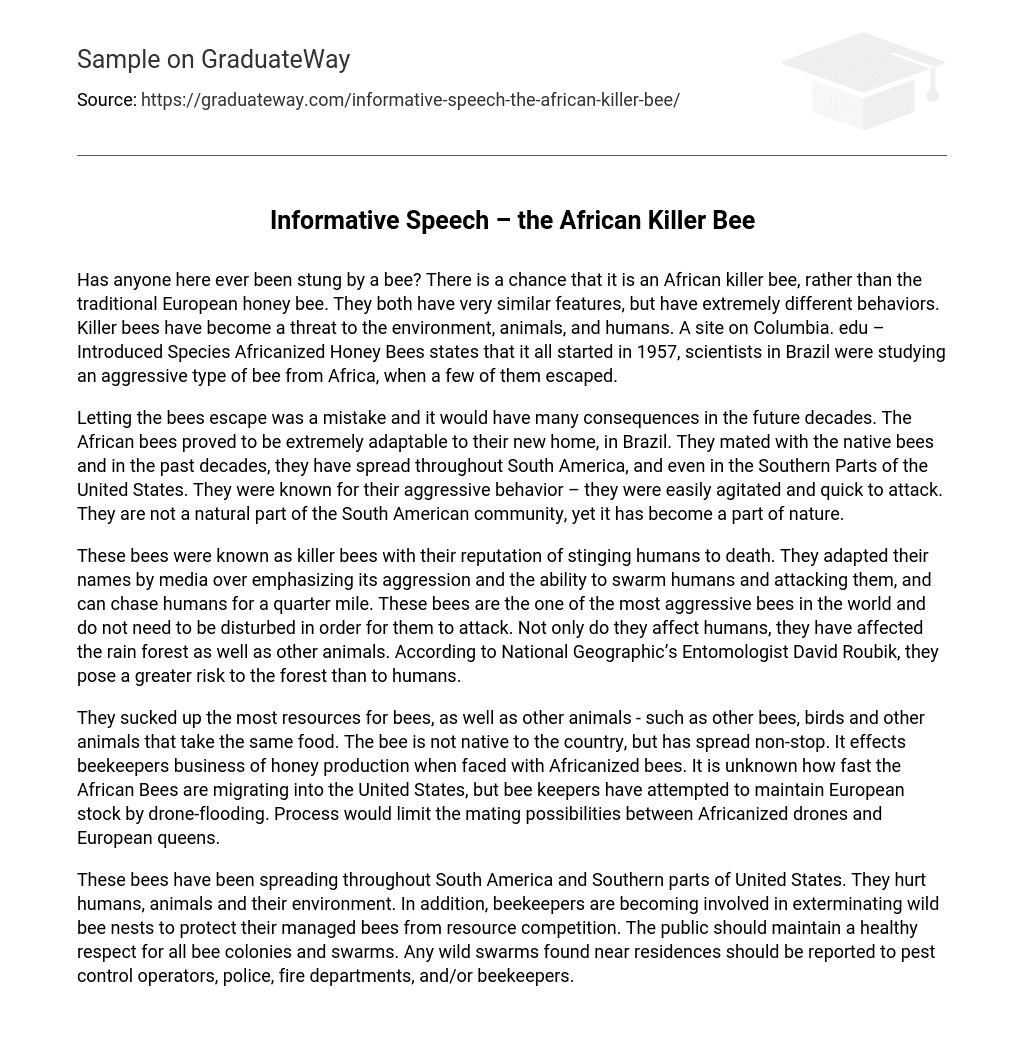Has anyone here ever been stung by a bee? It is possible that the bee could be an African killer bee instead of a traditional European honey bee. These two types of bees have similar physical characteristics but exhibit drastically different behaviors. Killer bees pose a threat to the environment, animals, and humans. According to a website from Columbia University, specifically the site on Introduced Species Africanized Honey Bees, this issue began in 1957 when scientists in Brazil were studying a highly aggressive African bee species and some of them managed to escape.
The decision to let the bees escape had significant consequences for future years. When the African bees arrived in Brazil, they displayed impressive flexibility by interbreeding with native bees. In the following years, these bees have spread throughout South America and to a lesser extent, the southern parts of the United States. These bees were known for their aggressive behavior, often becoming easily provoked and quickly launching attacks. Despite not being indigenous to South America, they have successfully become part of the local ecosystem.
The bees known as killer bees gained notoriety for their deadly stings and aggressive behavior, earning the nickname due to exaggerated media portrayals. They are known for swarming and attacking humans, often pursuing individuals for a quarter mile. Considered one of the world’s most aggressive species, they will attack unprovoked. Their impact extends beyond humans, negatively affecting the rainforest and other animals. National Geographic’s Entomologist David Roubik believes that they pose a greater threat to the forest than to humans.
The Africanized bee, which has been spreading continuously, has consumed a significant amount of resources that bees, birds, and other animals rely on. This impact is especially felt in honey production for beekeepers. While it is uncertain how quickly African Bees are migrating into the United States, beekeepers are taking steps to protect European stock by using drone-flooding techniques. The goal of this process is to decrease the likelihood of Africanized drones mating with European queens.
Bees have been spreading in South America and the southern regions of the United States, causing harm to humans, animals, and the environment. Additionally, beekeepers are working to eliminate wild bee nests to protect their domesticated bees from resource competition. It is crucial for the public to respect all colonies and swarms of bees. If any wild swarms are seen near residential areas, it is recommended to notify pest control operators, police, fire departments, or beekeepers.





